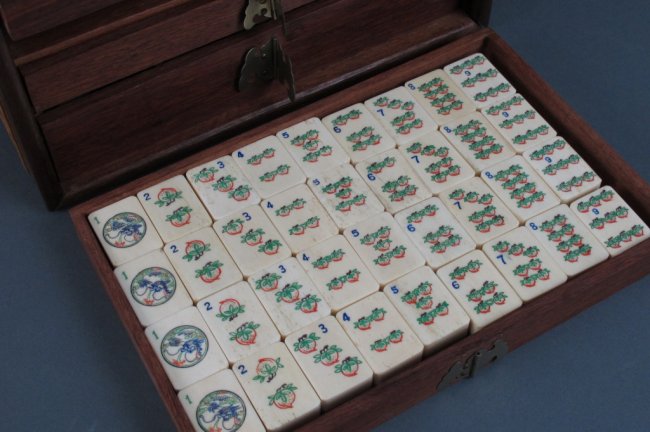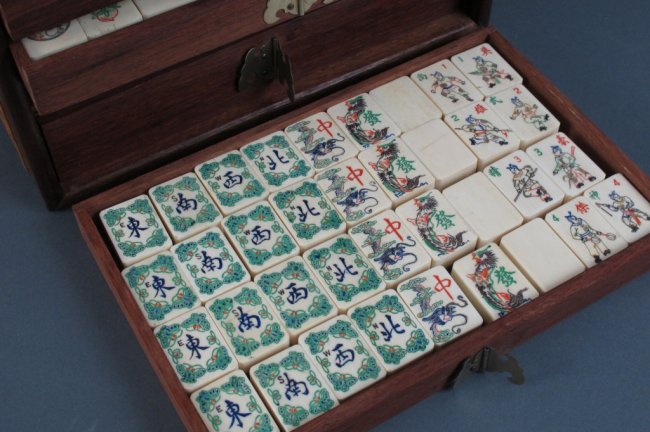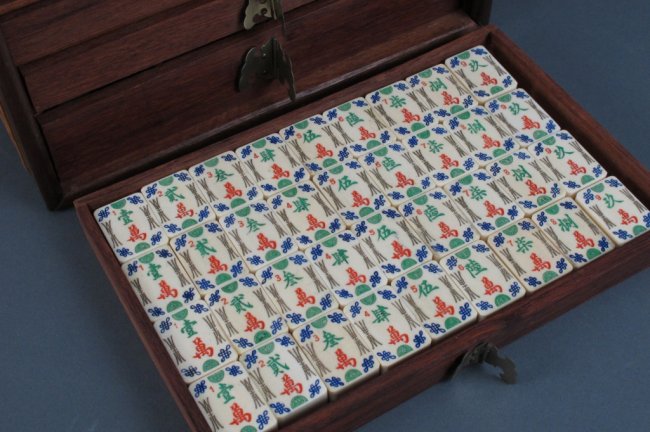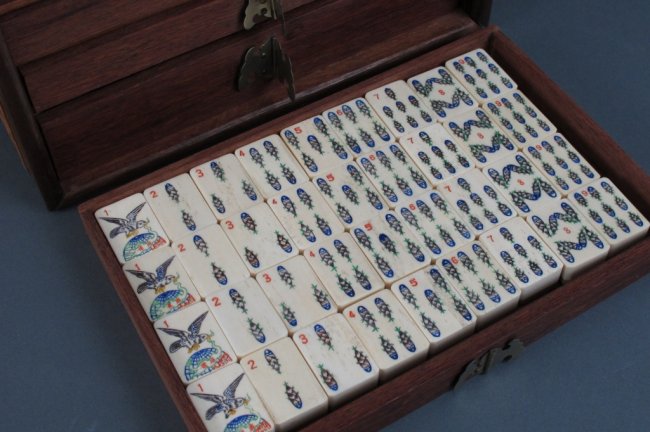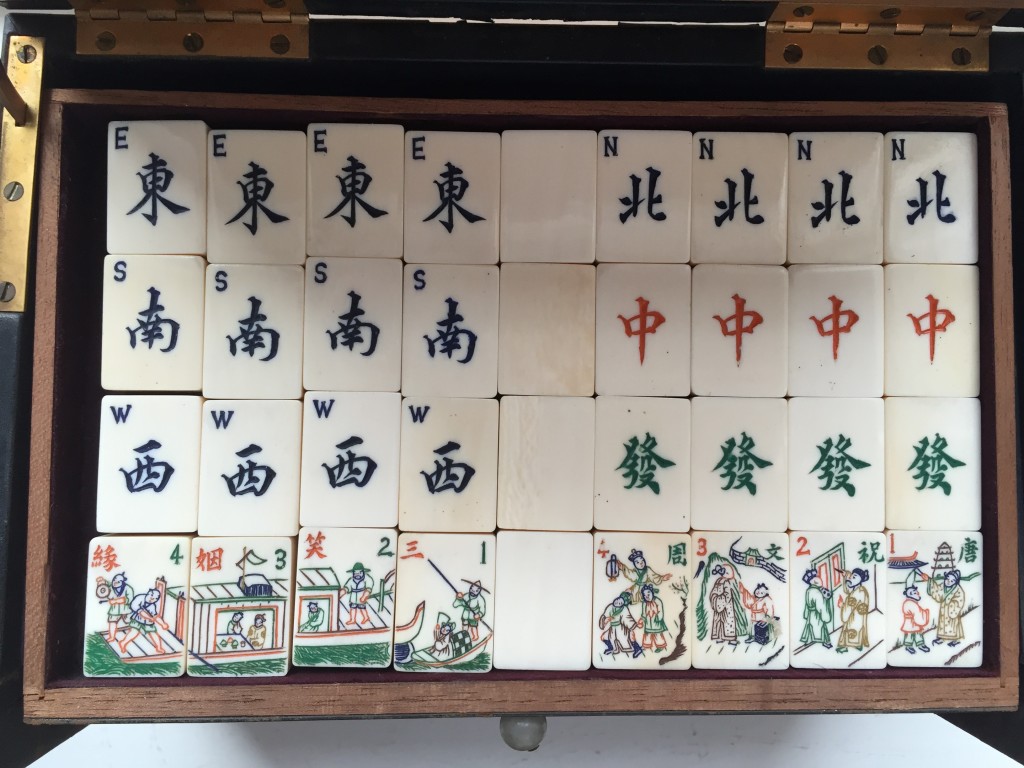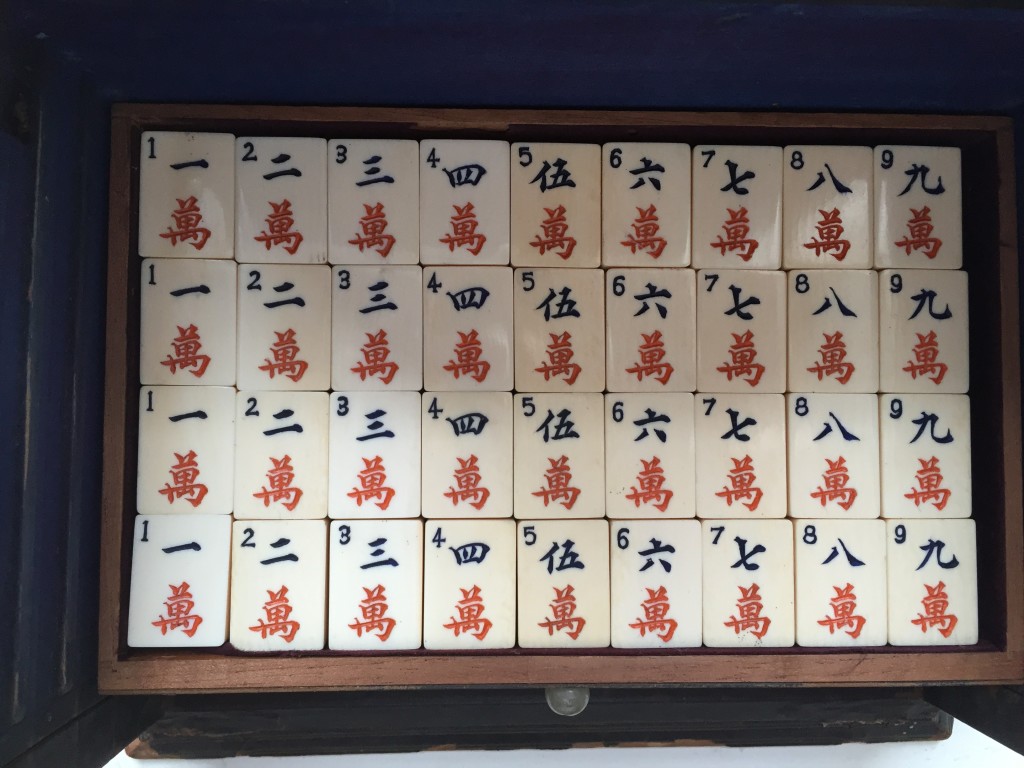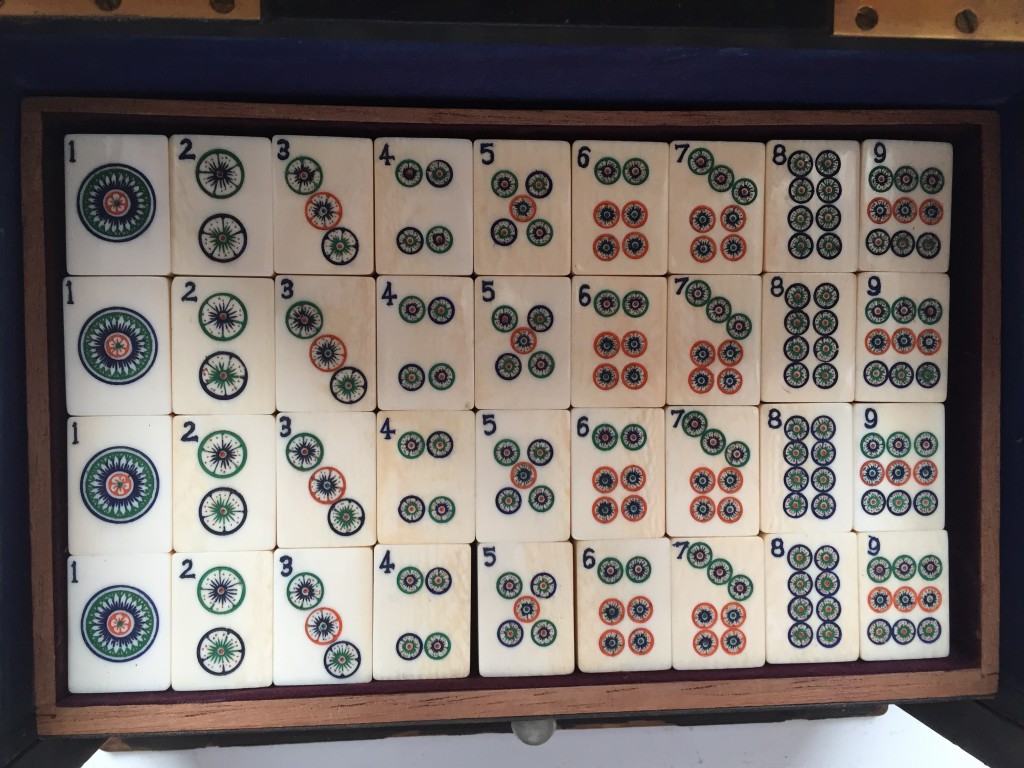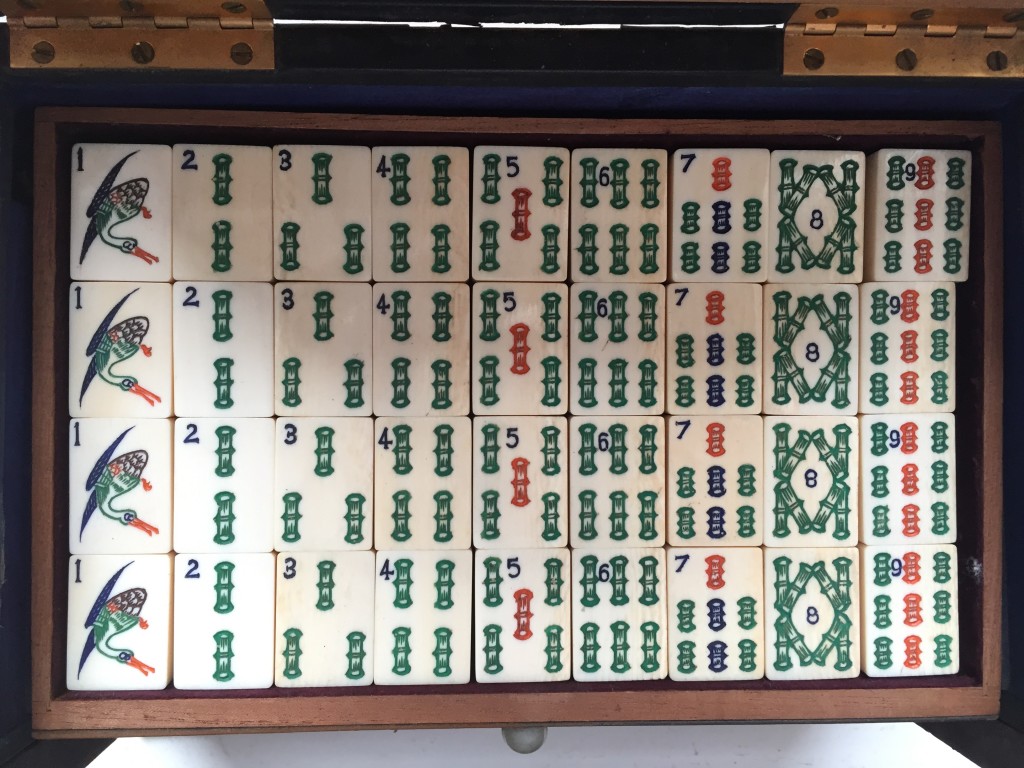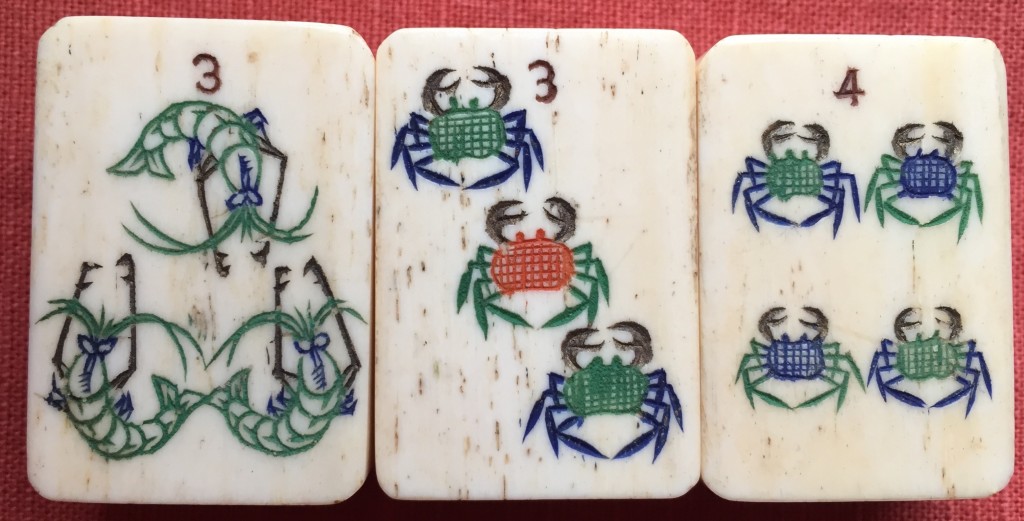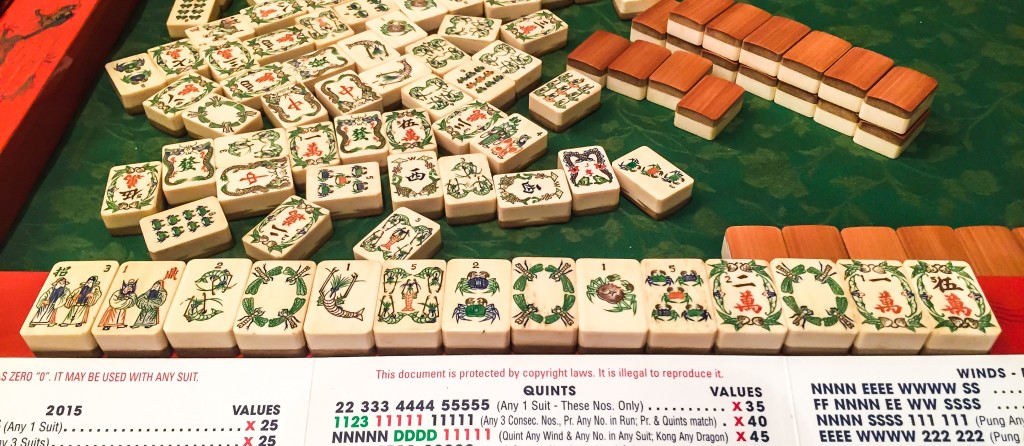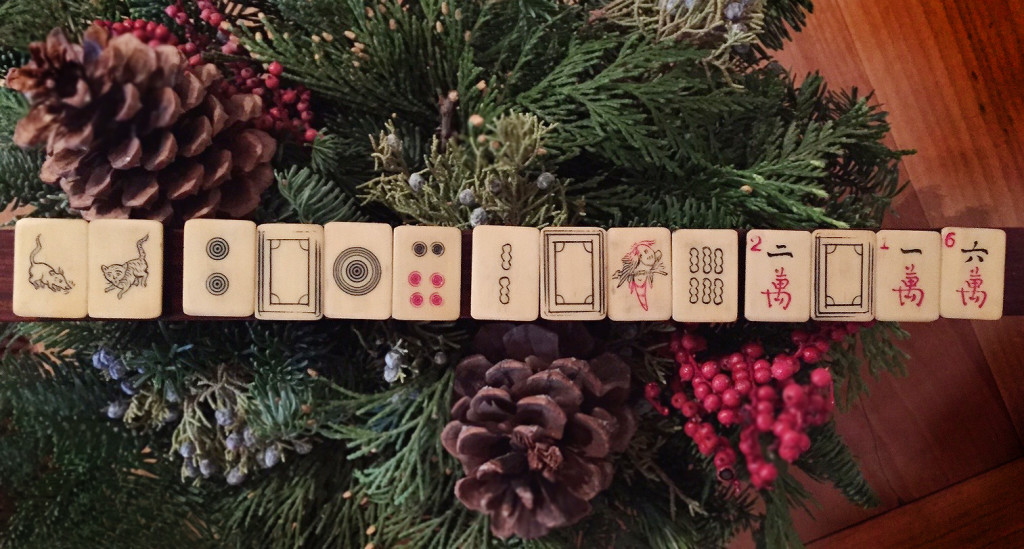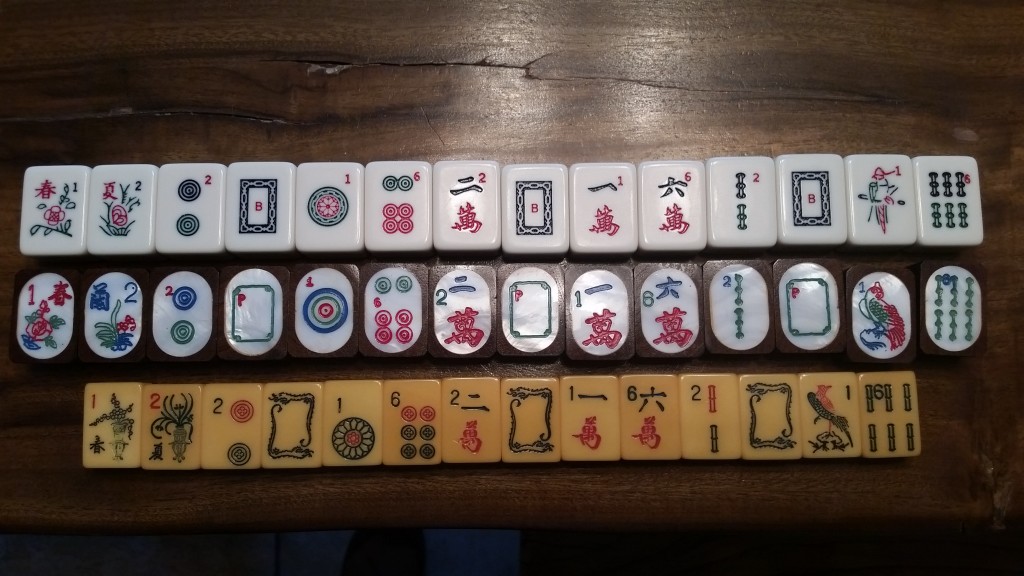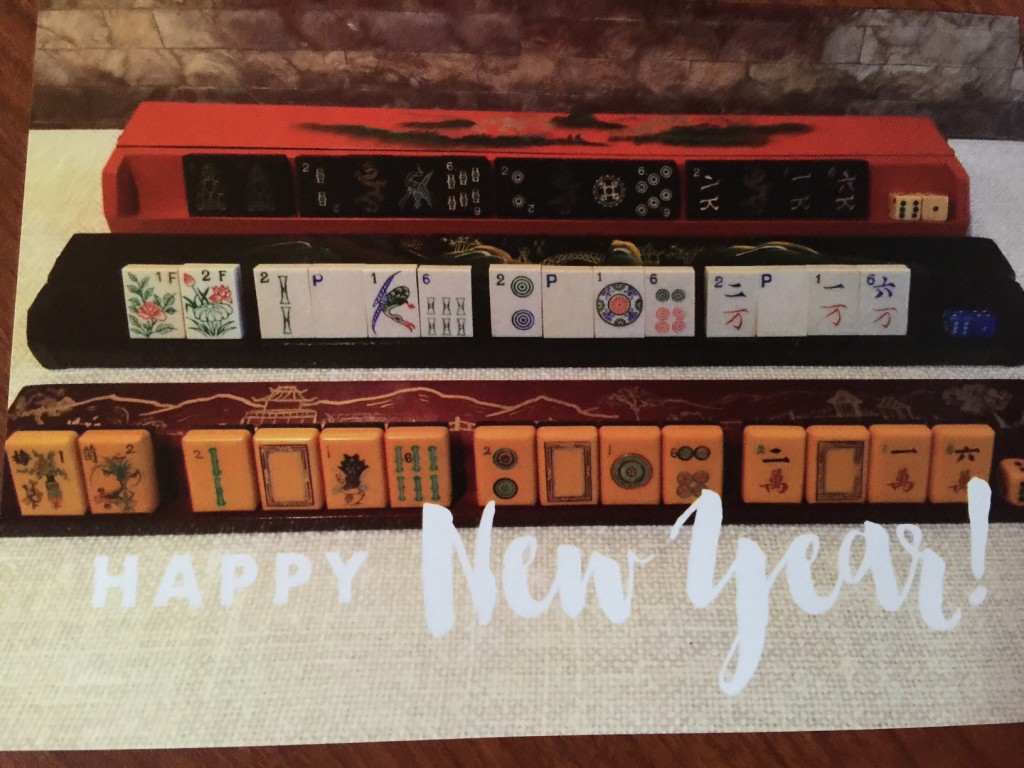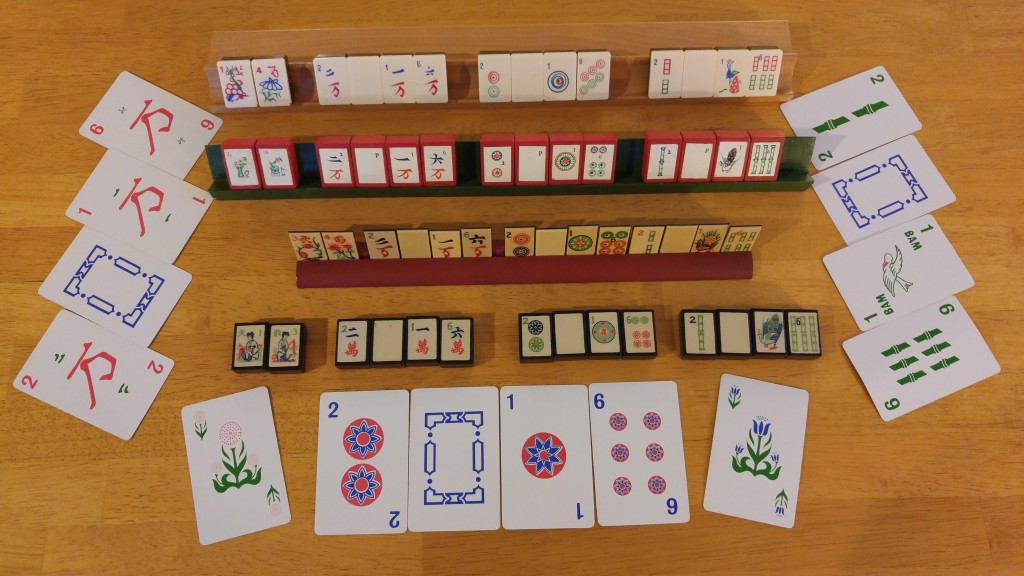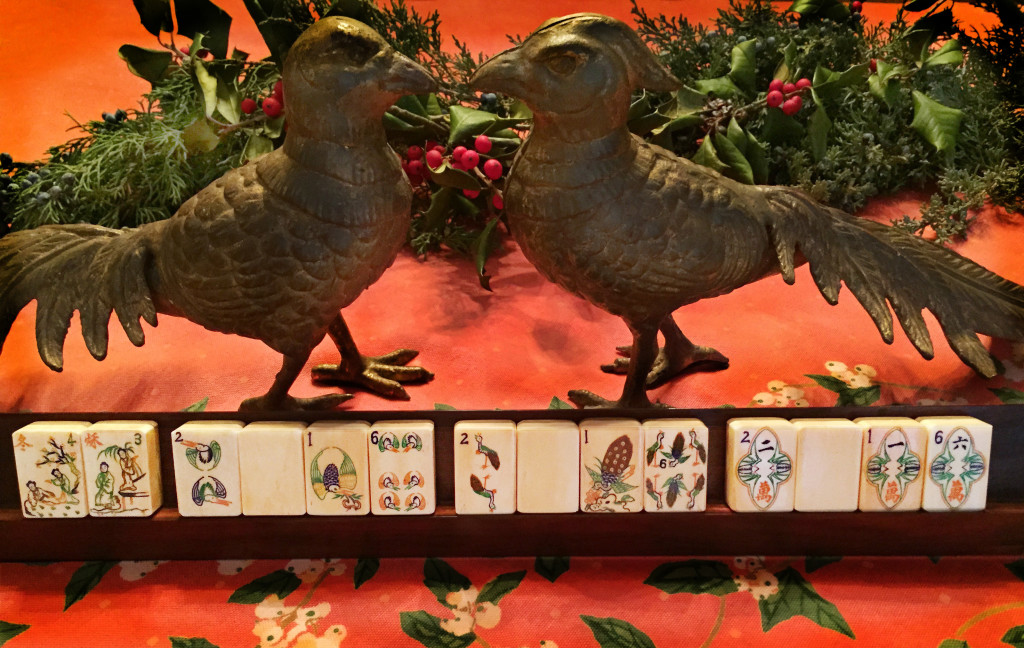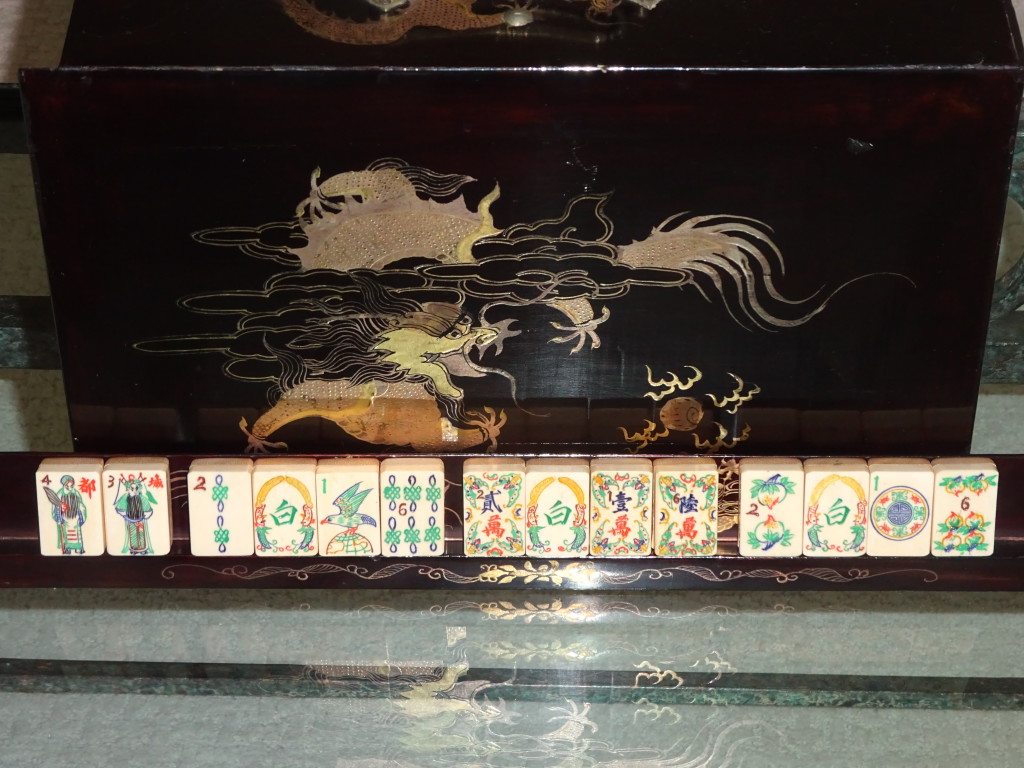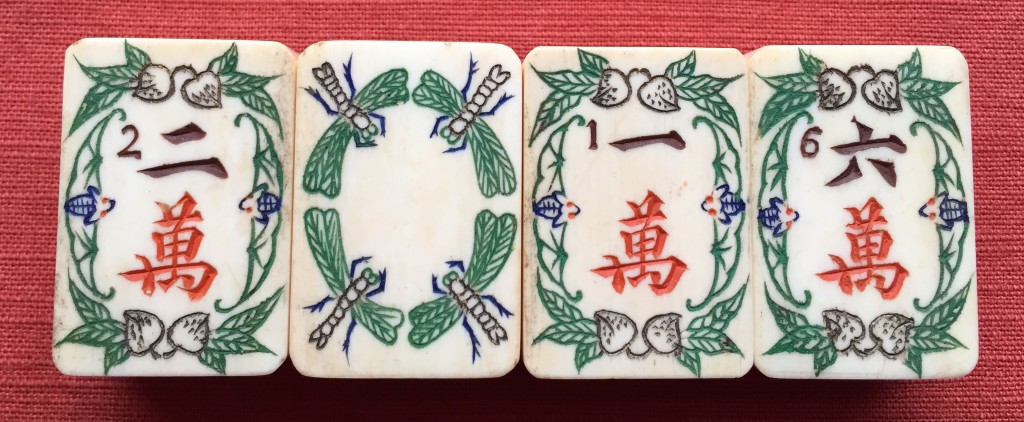Many people think they have ivory mahjong sets, either because they assume they do or that is what they have been told. Some people do have ivory tiles, but most people don't. But just because tiles are not made of ivory does not mean they are less valuable. In fact, some of the most expensive sets sold recently are bone and bamboo, not ivory and bamboo or pure ivory.
Why is it that some sets made of bone are more expensive than those made of ivory? The answer is simple: it is all about the carving and the designs on the tiles. In the 1920s, the heyday for Mahjong designers and carvers, China was very poor and ivory was in short supply. In fact, bone was scarce too. When China ran out of bone they were able to purchase some from the United States, from the stockyards in Chicago and the cattle ranchers in Nebraska. The best parts of the bone were bought by the best workshops, and they turned out high quality sets. Of course ivory was carved in the best workshops too, but it might have been that the shops were depending more on the ivory material alone to sell the set, and thus were not as inspired to make sets with wonderful designs that would make people want to buy the tiles.
This exquisite bone and bamboo set, seen below, recently sold for almost $10,000. And yes, for bone and bamboo, but look at the carvings and the images. Absolutely beautiful. In fact, each tile is a masterpiece. The Dots come first (peaches, with the One Dot a curled up Dragon often copied as joker tiles on the modern sets), Winds with butterflies in the corners, and Dragons with dragons and phoenixes, Flowers perhaps illustrating a tale of combat, and Craks with special Chinese numbers usually used by banks, surrounded by longevity symbols including endless knots, and Bams made of Bamboo shoots (and look at that divine One Bam bird with the ribbon in its mouth, symbolizing China's military strength).
This next set is solid ivory, and it sold for less than half of the above set. It is easy to see why. Yes, the carving is lovely, but the designs are much more unusual and intricate on the bone and bamboo set.
You will notice that the surface of the ivory is smooth.
Bone often has small channels in it, the haversian system, as you can see below, even in this very beautifully carved set.
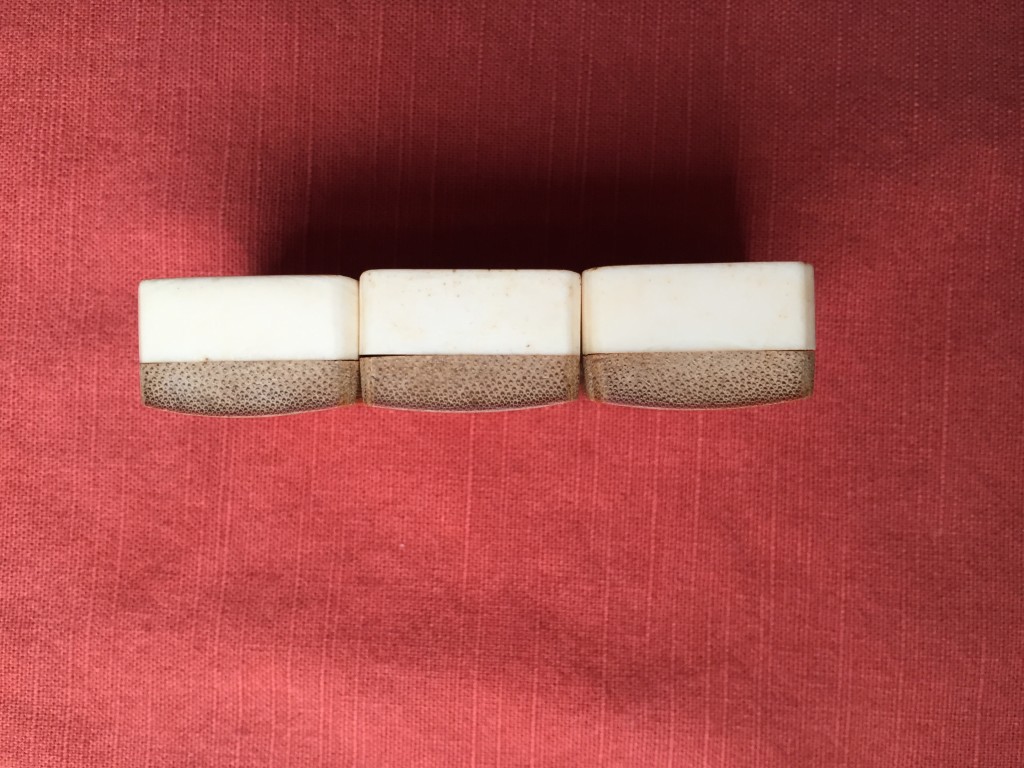
Below are two photos of ivory, seen from the top and the side.
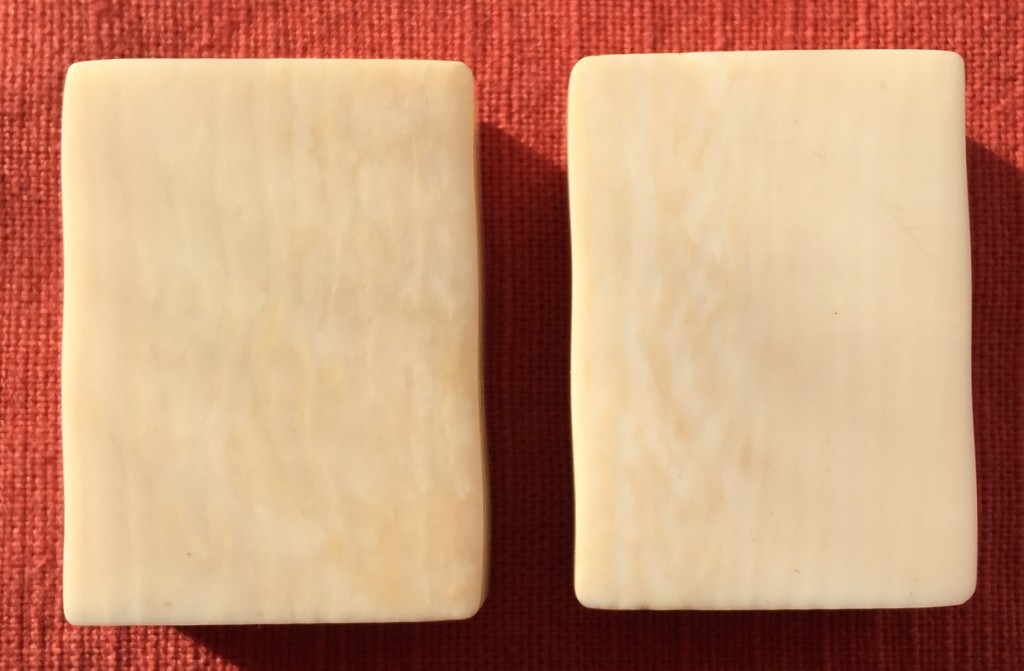

Ivory has cross-hatching known as Schreger lines, but sometimes several pieces need to be examined to see it, depending on where on the tusk the pieces came from. For more views of ivory, please click here to see the page devoted to ivory and French Ivory.

